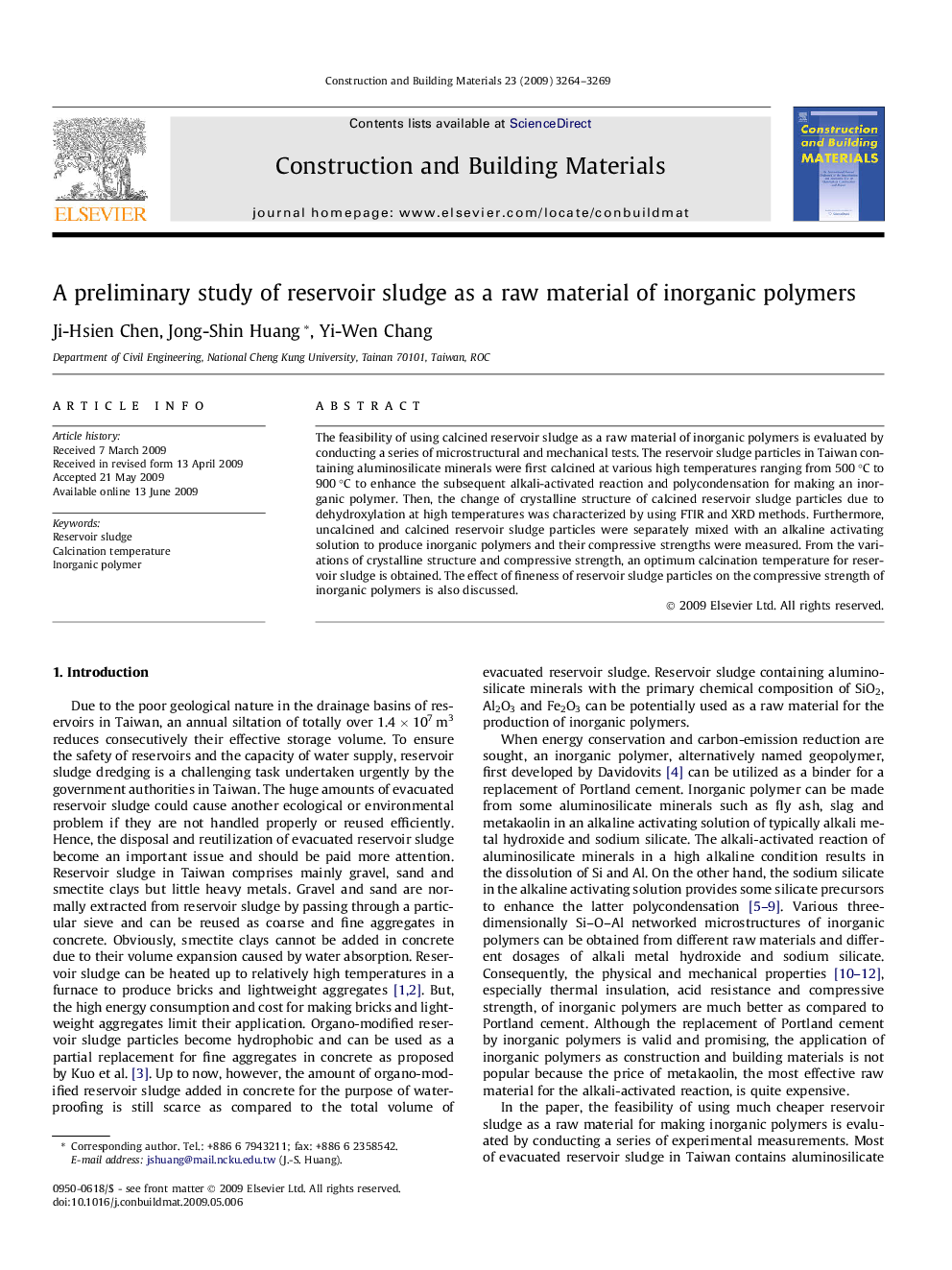| Article ID | Journal | Published Year | Pages | File Type |
|---|---|---|---|---|
| 260787 | Construction and Building Materials | 2009 | 6 Pages |
The feasibility of using calcined reservoir sludge as a raw material of inorganic polymers is evaluated by conducting a series of microstructural and mechanical tests. The reservoir sludge particles in Taiwan containing aluminosilicate minerals were first calcined at various high temperatures ranging from 500 °C to 900 °C to enhance the subsequent alkali-activated reaction and polycondensation for making an inorganic polymer. Then, the change of crystalline structure of calcined reservoir sludge particles due to dehydroxylation at high temperatures was characterized by using FTIR and XRD methods. Furthermore, uncalcined and calcined reservoir sludge particles were separately mixed with an alkaline activating solution to produce inorganic polymers and their compressive strengths were measured. From the variations of crystalline structure and compressive strength, an optimum calcination temperature for reservoir sludge is obtained. The effect of fineness of reservoir sludge particles on the compressive strength of inorganic polymers is also discussed.
